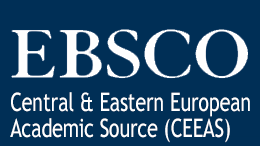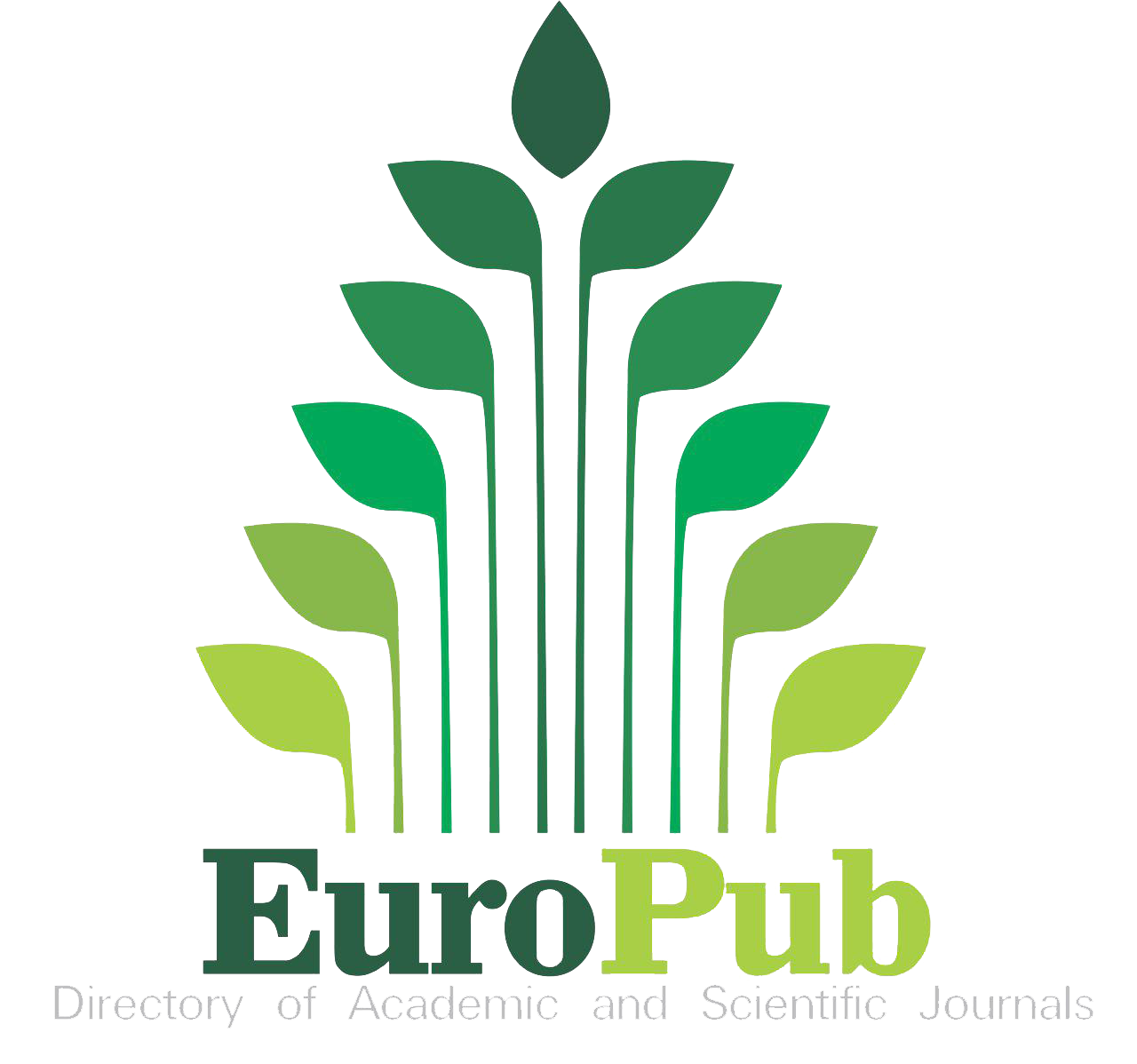Experimental traumatic brain injury models in rats
Experimental traumatic brain injury
DOI:
https://doi.org/10.5281/zenodo.8143363Keywords:
Rat, brain injury, injury models.Abstract
Head traumas are high-mortality pathologies that can disable. Traumatic brain injury (TBI) is a heterogeneous disease containing brain damage caused by external effects. In the human brain injury after trauma, examinations cannot be made at histopathological and molecular levels, and the effect of a new drug on a head -trauma person cannot be examined. Human models are required to experimentally reveal the similarities of human TBI’s biomechanical, cellular, and molecular events and to develop new treatments and show their effectiveness. Today, the most commonly used animals in TBI experiments are rats. Rats are preferred because their volumes are small and their costs are low, and the working groups can be enlarged. In this study, the commonly used rat TBI models and the restrictions of these models were compiled.
References
McIntyre A, Mehta S, Aubut J, Dijkers M, Teasell RW. Mortality among older adults after a traumatic brain injury: a meta-analysis. Brain Inj. 2013;27(1):31-40. doi:10.3109/02699052.2012.700086
Aggarwal P, Thapliyal D, Sarkar S. The past and present of Drosophila models of traumatic brain injury. J Neurosci Methods. 2022;371:109533. doi:10.1016/j.jneumeth.2022.109533
Werner C, Engelhard K. Pathophysiology of traumatic brain injury. Br J Anaesth. 2007;99(1):4-9. doi:10.1093/bja/aem131
Kumar Sahel D, Kaira M, Raj K, Sharma S, Singh S. Mitochondrial dysfunctioning and neuroinflammation: Recent highlights on the possible mechanisms involved in Traumatic Brain Injury. Neurosci Lett. 2019;710:134347. doi:10.1016/j.neulet.2019.134347
Vink R. Large animal models of traumatic brain injury. J Neurosci Res. 2018;96(4):527-535. doi:10.1002/jnr.24079
Briones TL. Chapter 3 animal models of traumatic brain injury: is there an optimal model that parallels human brain injury?. Annu Rev Nurs Res. 2015;33:31-73. doi:10.1891/0739-6686.33.31
Hendrich KS, Kochanek PM, Melick JA, et al. Cerebral perfusion during anesthesia with fentanyl, isoflurane, or pentobarbital in normal rats studied by arterial spin-labeled MRI. Magn Reson Med. 2001;46(1):202-206. doi:10.1002/mrm.1178
Marmarou A, Foda MA, van den Brink W, Campbell J, Kita H, Demetriadou K. A new model of diffuse brain injury in rats. Part I: Pathophysiology and biomechanics. J Neurosurg. 1994;80(2):291-300. doi:10.3171/jns.1994.80.2.0291
Adelson PD, Robichaud P, Hamilton RL, Kochanek PM. A model of diffuse traumatic brain injury in the immature rat. J Neurosurg. 1996;85(5):877-884. doi:10.3171/jns.1996.85.5.0877
Feeney DM, Boyeson MG, Linn RT, Murray HM, Dail WG. Responses to cortical injury: I. Methodology and local effects of contusions in the rat. Brain Res. 1981;211(1):67-77. doi:10.1016/0006-8993(81)90067-6
Chen Y, Constantini S, Trembovler V, Weinstock M, Shohami E. An experimental model of closed head injury in mice: pathophysiology, histopathology, and cognitive deficits. J Neurotrauma. 1996;13(10):557-568. doi:10.1089/neu.1996.13.557
Flierl MA, Stahel PF, Beauchamp KM, Morgan SJ, Smith WR, Shohami E. Mouse closed head injury model induced by a weight-drop device. Nat Protoc. 2009;4(9):1328-1337. doi:10.1038/nprot.2009.148
Goldstein LE, Fisher AM, Tagge CA, et al. Chronic traumatic encephalopathy in blast-exposed military veterans and a blast neurotrauma mouse model. Sci Transl Med. 2012;4(134):134ra60. doi:10.1126/scitranslmed.3003716
Albert-Weißenberger C, Várrallyay C, Raslan F, Kleinschnitz C, Sirén AL. An experimental protocol for mimicking pathomechanisms of traumatic brain injury in mice. Exp Transl Stroke Med. 2012;4:1. Published 2012 Feb 2. doi:10.1186/2040-7378-4-1
Kilbourne M, Kuehn R, Tosun C, et al. Novel model of frontal impact closed head injury in the rat. J Neurotrauma. 2009;26(12):2233-2243. doi:10.1089/neu.2009.0968
Kane MJ, Angoa-Pérez M, Briggs DI, Viano DC, Kreipke CW, Kuhn DM. A mouse model of human repetitive mild traumatic brain injury. J Neurosci Methods. 2012;203(1):41-49. doi:10.1016/j.jneumeth.2011.09.003
Shultz SR, Bao F, Omana V, Chiu C, Brown A, Cain DP. Repeated mild lateral fluid percussion brain injury in the rat causes cumulative long-term behavioral impairments, neuroinflammation, and cortical loss in an animal model of repeated concussion. J Neurotrauma. 2012;29(2):281-294. doi:10.1089/neu.2011.2123
McIntosh TK, Noble L, Andrews B, Faden AI. Traumatic brain injury in the rat: characterization of a midline fluid-percussion model. Cent Nerv Syst Trauma. 1987;4(2):119-134. doi:10.1089/cns.1987.4.119
Floyd CL, Golden KM, Black RT, Hamm RJ, Lyeth BG. Craniectomy position affects morris water maze performance and hippocampal cell loss after parasagittal fluid percussion. J Neurotrauma. 2002;19(3):303-316. doi:10.1089/089771502753594873
Cernak I. Animal models of head trauma. NeuroRx. 2005;2(3):410-422. doi:10.1602/neurorx.2.3.410
Alluri H, Wiggins-Dohlvik K, Davis ML, Huang JH, Tharakan B. Blood-brain barrier dysfunction following traumatic brain injury. Metab Brain Dis. 2015;30(5):1093-1104. doi:10.1007/s11011-015-9651-7
Dixon CE, Clifton GL, Lighthall JW, Yaghmai AA, Hayes RL. A controlled cortical impact model of traumatic brain injury in the rat. J Neurosci Methods. 1991;39(3):253-262. doi:10.1016/0165-0270(91)90104-8
Albert-Weissenberger C, Sirén AL. Experimental traumatic brain injury. Exp Transl Stroke Med. 2010;2(1):16. Published 2010 Aug 13. doi:10.1186/2040-7378-2-16
Xiong Y, Mahmood A, Chopp M. Animal models of traumatic brain injury. Nat Rev Neurosci. 2013;14(2):128-142. doi:10.1038/nrn3407
Williams AJ, Ling GS, Tortella FC. Severity level and injury track determine outcome following a penetrating ballistic-like brain injury in the rat. Neurosci Lett. 2006;408(3):183-188. doi:10.1016/j.neulet.2006.08.086
Mota B, Dos Santos SE, Ventura-Antunes L, et al. White matter volume and white/gray matter ratio in mammalian species as a consequence of the universal scaling of cortical folding. Proc Natl Acad Sci U S A. 2019;116(30):15253-15261. doi:10.1073/pnas.1716956116
Mutch CA, Talbott JF, Gean A. Imaging Evaluation of Acute Traumatic Brain Injury. Neurosurg Clin N Am. 2016;27(4):409-439. doi:10.1016/j.nec.2016.05.011
Singh B, Murad MH, Prokop LJ, et al. Meta-analysis of Glasgow coma scale and simplified motor score in predicting traumatic brain injury outcomes. Brain Inj. 2013;27(3):293-300. doi:10.3109/02699052.2012.743182
Kochanek PM, Hendrich KS, Dixon CE, Schiding JK, Williams DS, Ho C. Cerebral blood flow at one year after controlled cortical impact in rats: assessment by magnetic resonance imaging. J Neurotrauma. 2002;19(9):1029-1037. doi:10.1089/089771502760341947
Mahmood A, Lu D, Qu C, Goussev A, Chopp M. Long-term recovery after bone marrow stromal cell treatment of traumatic brain injury in rats. J Neurosurg. 2006;104(2):272-277. doi:10.3171/jns.2006.104.2.272
Ning R, Xiong Y, Mahmood A, et al. Erythropoietin promotes neurovascular remodeling and long-term functional recovery in rats following traumatic brain injury. Brain Res. 2011;1384:140-150. doi:10.1016/j.brainres.2011.01.099
Depreitere B, Meyfroidt G, Roosen G, Ceuppens J, Grandas FG. Traumatic brain injury in the elderly: a significant phenomenon. Acta Neurochir Suppl. 2012;114:289-294. doi:10.1007/978-3-7091-0956-4_56
Downloads
Published
How to Cite
Issue
Section
License
Copyright (c) 2023 RATS

This work is licensed under a Creative Commons Attribution 4.0 International License.


















